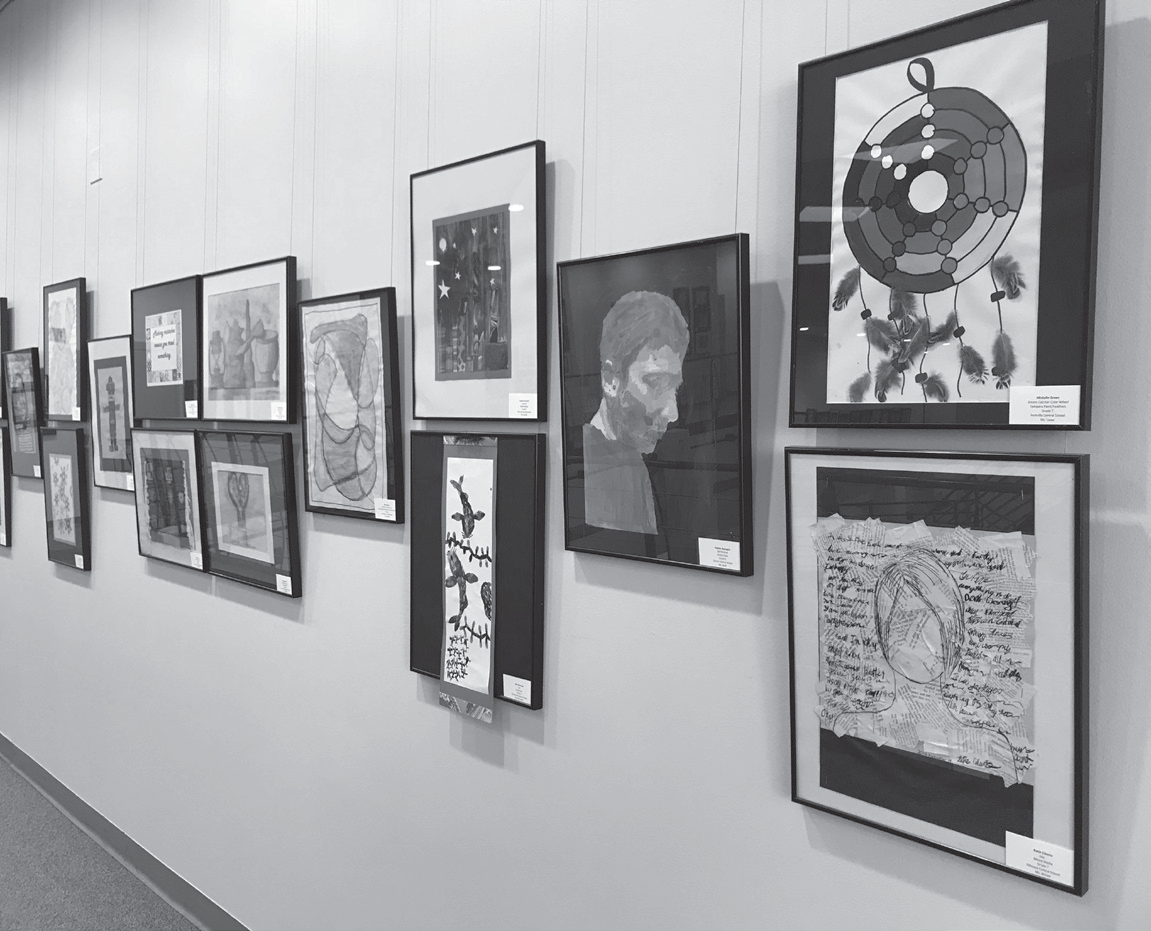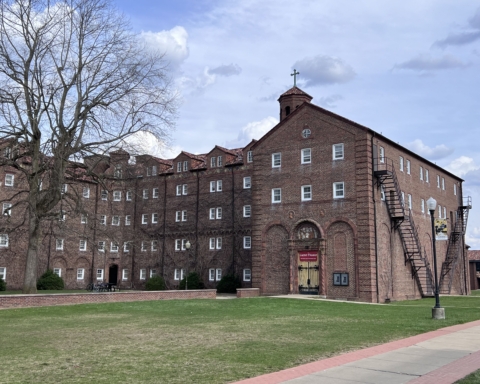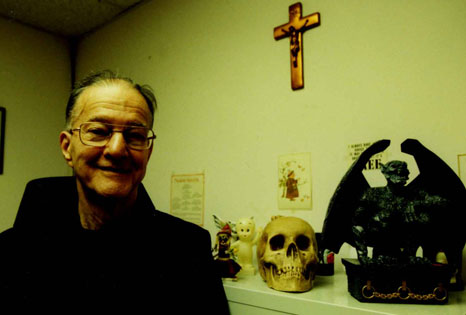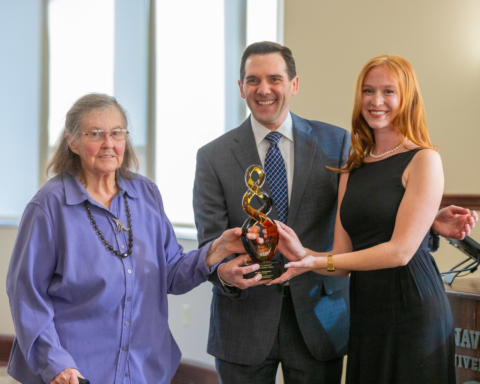“The Colorful 8th Grade Minds” exhibition began as a pilot program when Nicole Missel, art teacher at Allegany-Limestone Middle School, approached Sean Conklin, assistant curator at the Quick Center for the Arts, asking about a collaboration between her students and the museum.
Following the New York State Learning Standards for the Arts release in July 2017, they wanted to create a project that would help the students meet the new standards.
To do so, Conklin looked over the standards and saw where Missel felt she was lacking what she currently offered and developed an idea of creating an exhibition. These standards are centered on four main objectives for the visual arts: creating, presenting, responding and connecting.
The students’ first objective, creating, would be covered in the projects they had completed, while the remaining three objectives would be covered through mini lessons undertaken in the school, along with the physical design and opening of the exhibition.
“I ran mini lessons during the two eighth grade periods where Mrs. Missel and myself worked with the students on an exhibition proposal, exhibition design and flow, label design, marketing, poster design, event planning, curatorial research, writing artist biographies/statements and matting and framing works,” he said.
The students wrote an exhibition proposal that was considered by the Quick Center staff. The only requirement given to the students was by their teacher to select what they felt was their best work or series of works undertaken during the semester to be included in the exhibition.
“I think the main goal from the get go was to design a project that met the standards while also engaging the students,” Conklin said.
After the initial idea was decided on, Conklin worked in Allegany-Limestone Middle School two to three times a week for around three weeks to go through elements of exhibition design and planning.
“Our goal was to have the students involved in every aspect of a gallery installation from the very beginning, all the way to the exhibition opening on Jan. 23,” Ludwig Brunner, executive director of the Quick Center for the Arts, said. “For this exhibition, it was the students who decided what artwork that their classmates created would be placed in the exhibition.”
The Quick Center also does a lot of outreach with local school systems, so a secondary goal was to connect more with students and teachers and showcase what a resource the Quick Center can be locally, according to Conklin.
“We regularly showcase the artistic achievement of local students in our kindergarten through twelfth grade Juried Art Exhibitions,” Brunner said. “It’s very important for us to be viewed as a partner of our local school systems and we really love to highlight the importance of the arts in any way we can whether it be through our Young People’s Performances, School Visits or Family Days.”
Brunner said students are always excited when their work is selected to be hung in the galleries. He feels that by having their artwork displayed motivates them to put more effort into their next work to earn a place in the next show or experiment with a new artistic medium. The top winner of our ninth to 12th grade Juried Art Exhibition can also help them earn a scholarship to St. Bonaventure University.
“Additionally, I tried to use the opportunity to expose the students to other areas of the Visual Arts beyond what they may typically see,” Conklin said.
Conklin talked a lot about college and careers in the arts; specifically in museums in connection to the sciences with preparators, conservators and technical managers. He also discussing the digital field, along with print production, layout and pre-media, type designers, graphic designers, new media and video game designers,” he said.
On Jan. 23, the Quick Center had over 100 people attend the gallery opening to see the students’ work, featured in their smallest gallery.
“Almost everyone in attendance walked through our other galleries, engaged our staff and seemed to really enjoy the experience,” Conklin said. “I think by encouraging students to show their work here, we are showing we have a vested interest in the success of our local communities and want to offer people any great experience we can.”
Conklin believes any time a child can have a sense of agency in the learning process and really take ownership over the outcome of their experience, they will be more vested in a project and really try to make it a success.
“The sense of pride and accomplishment a student develops when their work is presented in a professional setting is unmatched. A project like this can be a great confidence builder for a student,” he said.
After the success of this program, the Quick Center does have plans to undertake additional projects and as the program progresses, to open the experience up as a contest where schools submit an exhibition proposal and the staff will select a winner to complete the project.
“After all the works were selected, my first few visits to the school involved working with the group as they each decided how to make an exhibition around all the varied pieces entered,” Conklin said. “The students developed a narrative about how the works should be hung and read by visitors and decided where individual works should fit within the larger theme of the exhibition.”
From this experience, students learn all the parts that go into creating a gallery show, while also learning how to work together as a team to achieve a common goal and how to give and receive constructive criticism.
In Conklin’s experience, schools aren’t placing enough importance on the arts, which he feels is a detriment to students. However, with the adoption of arts-specific standards by New York State, Conklin said it shows how the arts are moving back to a place of importance in our education systems.
“The Quick Center is ready to not just be a part of this transition, but offer support and leadership in any way we can to help students interact with and experience the arts through our offerings and outreach,” Brunner said.






